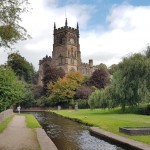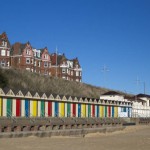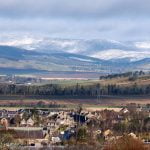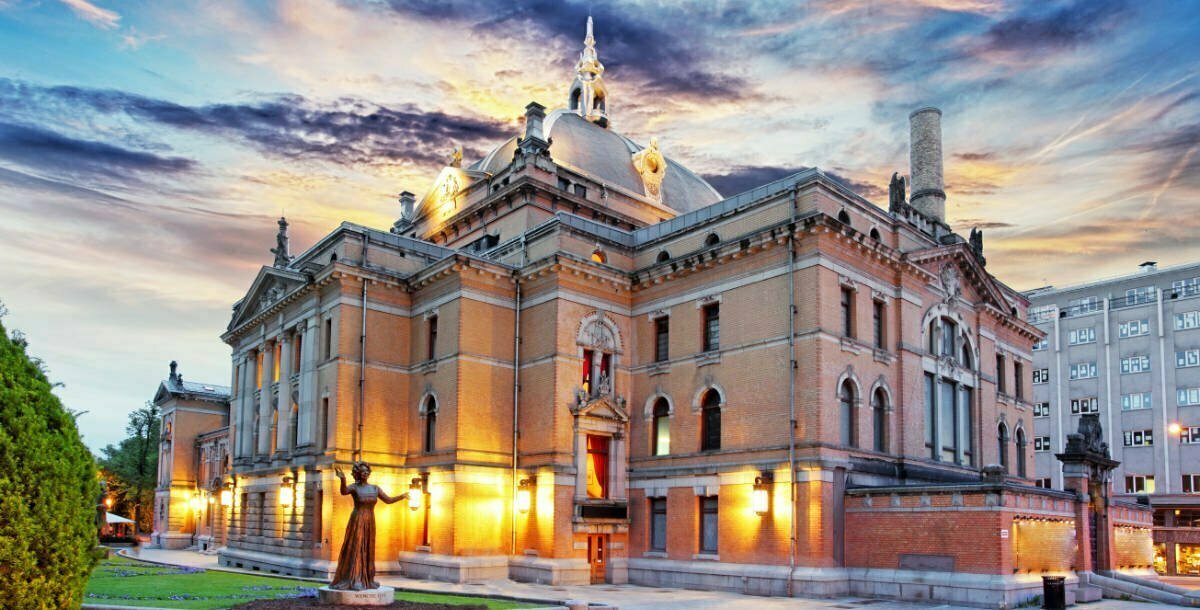
Oslo One Of Scandanavia’s Best Kept Secrets
For too long, Norway’s capital Oslo has been both one of Scandinavia’s and The World’s best-kept secrets. When Discussing the regions tourist cities it tends to be less well known compared to neighbouring Copenhagen and Stockholm.
Thankfully for this proud Nordic territory, times are changing. Enriched and emboldened by thriving industry, Oslo effortlessly blends traditional and ancient architecture with cutting edge, modern aesthetics.
What’s more, Oslo is also one of the greenest cities in Europe – both in terms of scenery and lack of air pollution. Coupled with the many and varied activities and attractions in the territory, you have the makings of a memorable visit.

Image: Noppasin Wongchum/Shutterstock.com
Before You Fly
There are a few things to consider before you even book your flight to the Norwegian capital. Ensure that you’re appropriately prepared for entering the country, and how you’ll negotiate life in Oslo.
Visas and Entry Restrictions
If you hold a British passport, you won’t need to undertake any special Visa arrangements to enter Norway. If your passport wasn’t issued by HM Government, this may differ.
If your passport is assigned to a country outside the EU (other than the UK!), you may need to apply for a Schengen visa. You can check if that’s the case here.
A Schengen visa will permit you to remain in Norway for up to 89 days. The usual restrictions apply here. You will not be able to seek employment during your stay, outside of casual cash-in-hand work that can fly under the radar. Even then, tread carefully. If you’re caught by the authorities, you’ll likely be forced to leave the country.
If you plan to stay in Oslo (or Norway in general) for 90 days or longer, you’ll need to apply for a residency permit.
Currency
The official currency of Oslo is Norwegian Krone (NOK). Exchange rates obviously vary based on global markets and your choice of bank. On average, expect GBP£1 to work out at around NOK11.
You may need to start saving in advance. Oslo is considered an expensive city – among the three costliest locations in Europe. Believe it or not, it’s deemed even pricier than London.
As a rule of thumb, expect to spend a daily average of GBP£100 while in Oslo That’s not including accommodation – that’s just sustenance, travel and activities. If you’re planning on a few wild nights out, you’ll need more cash. Alcohol is heavily taxed in Norway, so your first few trips to the bar may leave you wincing.
Climate
Knowing what to pack is an important element of visiting Oslo. The climate is variable, depending on the time of year. Bringing inappropriate clothing can make your time in Norway deeply uncomfortable.
If you’re not a fan of the cold, time your trip carefully. Temperatures can drop to around –4 degrees Celsius during winter. The coldest period is between November and March. These times of year will bring frost, and potentially snow.
During the summer, Oslo is usually warm without being too hot. The highs are typically between 22 and 25 degrees Celsius. Not quite shorts and flip-flops weather, but certainly more appealing to those that feel the chill.
Language
The vast majority of Oslo residents speak flawless English, with children learning our lingo from a very early age. All the same, Norwegians are proud of their heritage. Willingness to at least attempt a few token phrases in the native tongue will endear you to locals.
Pick up a phrasebook before your travel. Norwegian is a pretty anglicised language, so it’s comparatively simple to learn the basics. Once you have laid the groundwork, asking, “do you speak English?” ahead of more complicated questions will rarely cause offence.
Insurance
The Norwegian healthcare system is funded by state taxes, much like our very own NHS. As a non-national, however, you will not be entitled to free healthcare should you fall ill on holiday. Make sure you have a comprehensive travel insurance policy.
One exception to this is urgent medical concerns. Apply for a European Health Insurance Card (EHIC) from the NHS ahead of travelling. This will entitle you to emergency care if you have an accident on the ski slopes or fall ill. You’ll have to pay a nominal amount for your treatment, but will not be hit with a full bill.
If your condition is not considered an emergency, however, an EHIC will carry no weight. Remember, a healthcare professional decides what is urgent, not you. In addition, it will not cover costs for returning you to the UK ahead of your scheduled flight. You’ll be on the hook for the full financial cost of your treatment. Ensure your insurance policy covers every eventuality.
Getting to Oslo
Flying is, by far, the fastest way to get to Oslo. If you want to take a ferry, you’ll need to leave from Immingham (six miles from Grimsby), disembarking in Brevik. This small town is around two hours from Oslo by road. The operator of this route is DFDS Seaways, and the journey will take around 36 hours. Ships typically leave Immingham twice a week.
Flying takes between two and three hours. At the time of writing, you can take direct flights to Oslo Gardermoen (OSL) from the following UK airports.
- London Heathrow (British Airways, Scandinavian Airways)
- London Gatwick (Norwegian Air)
- Manchester (Scandinavian Airways, Norwegian Air)
- Edinburgh (Scandinavian Airways, Norwegian Air)
- Aberdeen (Scandinavian Airways)
Naturally, this information is a moving feast. Routes change regularly. Always check well in advance before making travel arrangements.
Where to Stay in Oslo?
Oslo is a diverse city, with a number of different territories to explore. Where you station yourself depends on how you’re looking to spend your time.
The usual major chains are all present and correct in the city centre, known as Sentrum. If in doubt, look for a hotel in this area. You’ll find accommodation with the appropriate star rating, and you’ll be within touching distance of easy transport and countless attractions. The flipside is that, naturally, there’s a price tag attached to being based at the heart of the action.
If you’re looking for a more unique Oslo experience, check out Grünerløkka. This hipster’s paradise is comparable to Shoreditch – you’ll find no shortage of unique and quirky cafés, vintage clothing shops and nightspots. Grønland & Tøyen are also located on Oslo’s east side, playing host to a range of cheap dining options and museums. This territory is probably one to visit rather than base yourself in, though.
Head west and you’ll find Majorstuen – one of the best-connected parts of Oslo for travel. If you don’t anticipate spending much time in the city centre, try this location. You won’t have any difficulty getting around to other parts of Oslo, as well as other Norwegian cities. Bygdøy, meanwhile, is arguably Oslo’s cultural hub. If museums are your passion, get close to this area.
LGBTQ visitors do not need to hunt down a specific corner of Oslo to base themselves. The whole city is extremely welcoming and open-minded, with Norway being one of the first nations to embrace marriage equality and anti-discrimination laws. LGBTQ-friendly nightspots are also found throughout the city.
Getting Around Oslo
Do not bother hiring a car upon arrival at Oslo airport. Parking in the city centre is virtually non-existent, and cars are conspicuous by their absence. Oslo prides itself on its greenery and eco-friendly credentials.
Thankfully, public transport is plentiful. Upon arrival, pick up an Oslo Pass. This will entitle you to unlimited travel throughout the city, using the wide range of trains, trams and buses. If you’re exploring the city, an Oslo Pass is considerably more cost-effective than one-off single or return tickets. The prices are:
- 24-hour pass – NOK445 for an adult, NOK235 for a child, NOK355 for a senior citizen
- 48-hour pass – NOK655 for an adult, NOK325 for a child, NOK520 for a senior citizen
- 72-hour pass – NOK820 for an adult, NOK410 for a child, NOK655 for a senior citizen
Don’t take chances and skip out on buying this pass. If you are caught on any kind of public transport without a ticket, you’ll be hit with an on-the-spot fine of NOK950. If you don’t pay there and then, the penalty rises to NOK1,150, to be settled within 14 days.
Things to Do in Oslo
There is no shortage of ways to amuse yourself in Oslo. Whether you’re looking for a quiet retreat or an action-packed adventure, the city has you covered.
Art and Culture
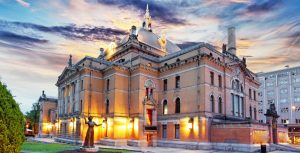
The Oslo National Theatre.
Image TTstudio/shutterstock.com
As we discussed previously, Bygdøy is a mecca for museum lovers. No less than five museums are located in this district alone, alongside various cafés and pubs.
If you’re visiting in 2021 or later, however, don’t neglect the National Museum in the city centre. Once opened, this will host the largest collection of art in Norway. The jewel in the museum’s crown will be the opportunity to gaze upon Edvard’s Munch’s celebrated painting The Scream.
Oslo also boasts a range of theatres and cinemas. During the summer, you may be able to catch an outdoor screening in one of the city’s many public parks. The city’s opera house is also an architectural marvel, with plenty going on inside that’s worth seeing.
You’ll also find no shortage of live music. All tastes are catered for – jazz is popular in the city, but there are also a great many rock and pop acts regularly performing.
Adventure and Outdoor Activities
We previously mentioned that Norway gets pretty cold during the winter. This isn’t ideal for pottering, but it’s perfect for ski enthusiasts.
Skiing is available in Oslo until early April, and there is a range of slopes within an hour of travel on public transport. The Oslo Winter Park, in particular, is the most popular resort of its kind in Norway. You’ll find this in Tryvann, 40 minutes from the city centre on the subway.
Kayaking and canoeing are also hugely popular pastimes in Oslo. They’re also a great way to explore the city’s scenic fjords. You could take a guided tour, or steer yourself if you’re confident enough. Lessons are also available if you’re a novice but keen to get involved.
Peace and Tranquillity
If all of that sounds exhausting and you just want a quiet life, Oslo also has you covered.
The 45-hectare Frogner Park is the biggest green space in the city, and one of the most popular tourist destinations in Norway. 80 acres are dedicated to sculptures, so it’s a fantastic place for art lovers. If you’d rather stay in Sentrum, however, you have ten separate parks to choose from.
If you prefer the smell of the sea and the feel of sand between your toes, head to Hukodden Beach in Bygdøy (sometimes known simply as Huk). It gets pretty busy in the summer, as you might expect, but it’s a great spot and packed with refreshment stands and kiosks. Just be warned – part of the beach is reserved for naturists, so be aware of where you are if you don’t want a shock!
If you’re travelling with children and don’t want to risk an eyeful, try the Hvalstrand Bad Beach. Don’t be put off by the name – this is a spot of natural beauty and it’s popular with young families. Ingierstrand Beach is slightly further afield to the east, but it’s another family-friendly location.
If you’re looking for a quieter spot to sunbathe, head south of the Aker Brygge and find the Tjuvholmen Beach. Life moves a little slower here, so it’s a great place to relax. If you’re a keen saltwater swimmer, meanwhile, be sure to check out Hovedøya Island.
So there we have it our quick guide visit Oslo guide. You can see more of our Scandanavia guides here.
